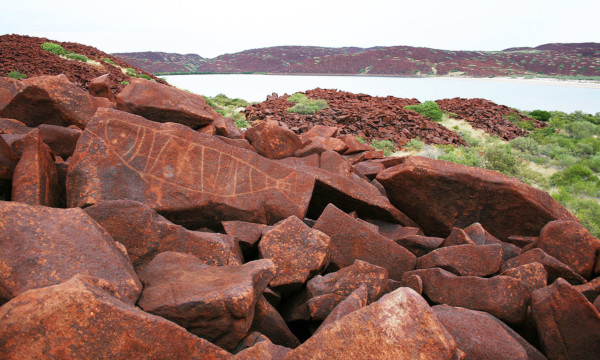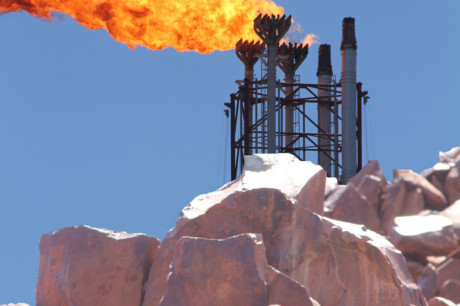
Sydney: On a far flung peninsula halfway up the coast of Western Australia are strange piles of cubic boulders that look like rusty refrigerators and boxes. Decorating their flat faces are more than one million rock carvings, some believed to be as much as 40,000 years old.
The petroglyphs at the Burrup Peninsula, also known as Murujuga by the traditional custodians, are Australia’s largest and oldest collection of rock art.
They provide an extraordinary and unique continuous record of the stories and life of the Yaburarra people who lived there until the 1860s when they were wiped out in a massacre.
But a kilometre away are some of Australia’s largest and dirtiest chemical plants. The air that hangs over this remote peninsula is often fouled with a yellow haze from the chimneys of the Yara ammonium nitrate and fertiliser plants, an LNG gas processing plant and the emissions from ships burning sulphur-rich bunker fuel as they visit the port to pick up iron ore.
The result is an increase in atmospheric acidity that archaeologists, scientists and environmentalists say is dissolving the rocks and threatening the future of the rock art. There is a raging debate over the scientific studies that have been used to say that industry and the rock art can safely coexist.
The Burrup peninsula was opened up for industrial development in the 1960s and 1970s by the Western Australian government before people were aware of the significance of the huge trove of petroglyphs. Some rock art was almost certainly destroyed during development, but in 2007, the remaining carvings were placed on the national heritage register by the federal government and part of the peninsula was declared a national park.
Flawed science
Despite this, further expansion of industrial activity has been given environmental approval by both the federal and state governments based on what campaigners say was flawed science by the CSIRO (Commonwealth Scientific and Industrial Research Organisation) on the ability of the rock art to withstand up to 1,000 times higher levels of acidity in the atmosphere. The most recent is the Yara ammonium nitrate explosives plant, approved in 2015. There are still more vacant industrial sites on the peninsula.
The Western Australian government has made supportive noises about seeking a world heritage listing which would increase the responsibility on the federal government to protect the site. It would arguably act as a deterrent to companies who might be eyeing the vacant industrial land nearby for development.
Another, less easy change would be to require ships visiting the area to run on low-sulphur fuel as used by cruise ships while visiting cities.
But requiring world’s best practice on emissions stacks as well as banning future expansion of industry on the Burrup peninsula will come with serious costs.
The CSIRO studies are at the heart of those approvals, so if the Senate committee accepts Black’s findings, it is likely the plants will be forced to change the way they operate.
Siewert says she would like to see a recommendation from the committee that the Yara plant be moved elsewhere in the state.
The three companies in the vicinity of the rocks have all made significant financial contributions to the documentation and preservation of the Burrup peninsula petroglyphs as part of their development conditions.
But the companies are likely to baulk at options that require major changes.
— Guardian News & Media Ltd












